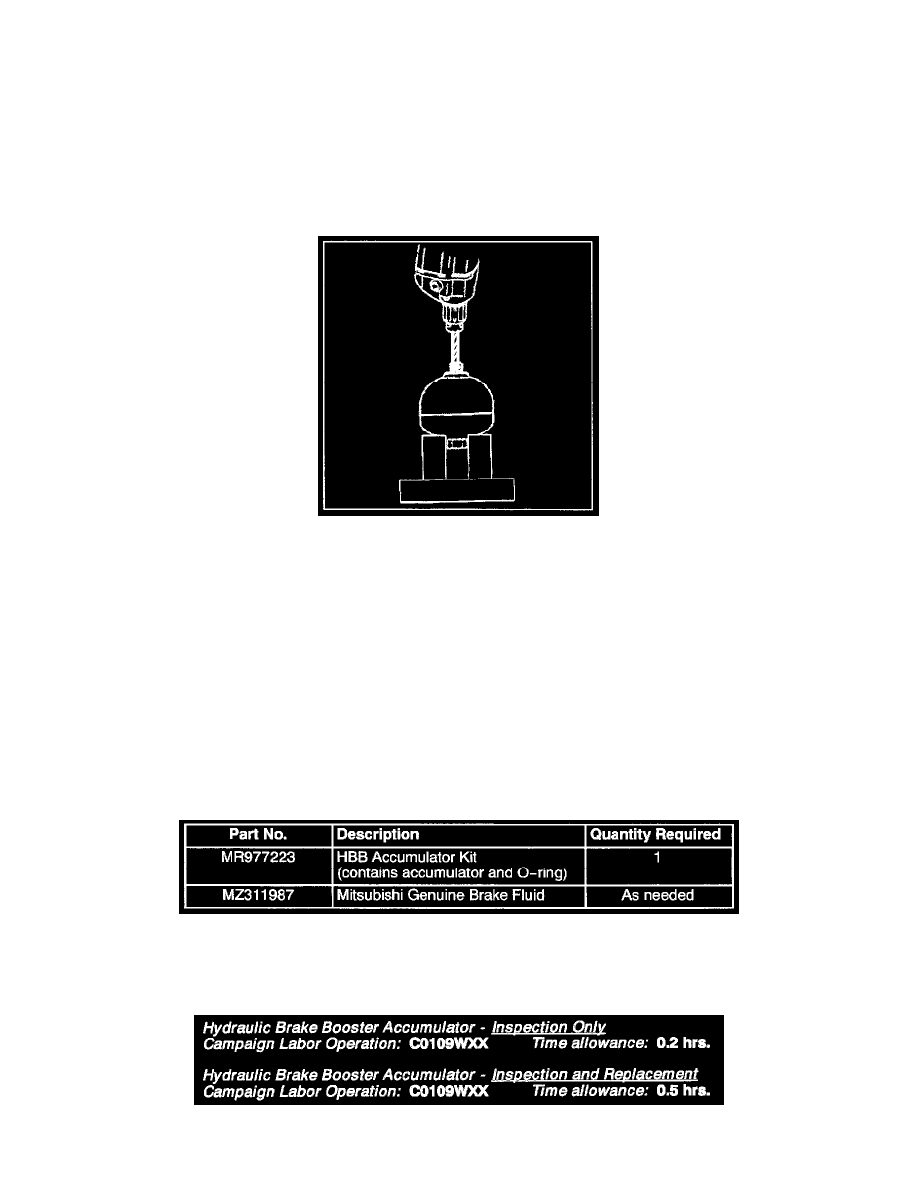Montero Sport XLS 4WD V6-3.5L SOHC (2002)

d.
Replenish the brake fluid in the reservoir tank until it reaches the MAX level.
6.
Check for any brake fluid leakage around the accumulator.
7.
Discharge and dispose of the old accumulator as follows:
WARNING
THE NITROGEN GAS INSIDE THE ACCUMULATOR MUST BE DISCHARGED BEFORE DISPOSAL.
WEAR SAFETY GLASSES DURING THIS PROCEDURE.
--> a.
Discharge the accumulator in an area away from all vehicles, to prevent any possible damage from brake fluid, rubber and plastic particles that
may spray out.
--> b.
Secure the accumulator in a vise, with the threaded nipple pointing upward.
--> c.
Insert a 4mm drill bit in the hole in the nipple. Then SLOWLY drill through the hole in the nipple. You will hear a hissing sound as the
nitrogen gas is released. The gas is odorless, colorless, and harmless.
NOTE:
Small pieces of plastic and/or rubber may spray out from the drilled hole.
--> d.
Scratch a large X on the accumulator near the nipple, to identify that it has been discharged.
--> e.
If any brake fluid remains in the accumulator, drain the fluid out.
f.
Dispose of the accumulator in compliance with Federal, state, and local laws.
PARTS INFORMATION
A small supply of HBB accumulator kits will be shipped to each dealer automatically. Orders for additional parts can be placed through the normal parts
system.
WARRANTY INFORMATION
